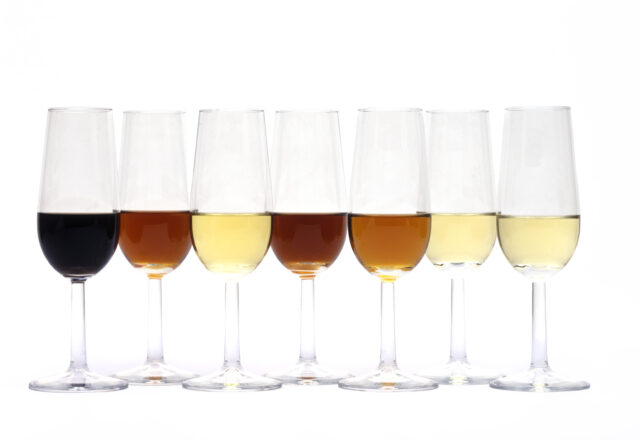How Sherry has been the UK’s unlikely lockdown winner
After years of relatively lacklustre sales, it’s taken a pandemic to turn around Sherry’s fortunes in the UK, with consumption booming during the lockdowns.

That was the message from Martin Skelton, managing director of Gonzalez Byass UK, the distributors of Tio Pepe, during an exclusive interview with the drinks business yesterday.
Admitting that the fortified wine, which was once so prominent in the UK, had become marginalised, he said that Sherry had undergone “an incredible turnaround” during the past year, with a surge in demand that appears to be continuing into the start of 2021.
Considering sales for the 12-month period to 26 December last year, Skelton told db that total Sherry sales had risen 13% in volume and 15% in value, quoting figures for the UK retail sector, which came from Nielsen.
While growth had been witnessed in Port too, it has been Sherry, admittedly off a smaller base, where the increases have been most marked, with the overall fortified wine category rising by 7.5% in volume and 12% in value over the same period.
Sherry has enjoyed a notable surge in consumption in the 12-week period leading up to Christmas, with sales growth of 15%, which Skelton described as “incredible”.
Despite UK Government restrictions on household mixing in the run-up to and over Christmas, the demand for Sherry was significantly greater than during the festive period in 2019, an outcome that has surprised Skelton.
He explained, “At Christmas, there are hundreds of thousands of people who buy a single bottle of Sherry as a gift, so we thought that the sales would fall this Christmas, but the opposite happened; the market increased further.”
Not only that, but January has witnessed “the single biggest month for year-on-year increases in Sherry sales,” he recorded, measuring his enthusiasm by pointing out that the normal level of sales in the past month is low.
“If December represents 2.5 times the typical level of sales for Sherry, then January is one quarter of a typical month,” he said.
So what is the reason for such growth?
Looking back across the past year, Skelton believes that the Government-enforced restrictions on basic human freedoms during the coronavirus pandemic have worked to Sherry’s advantage.
For a start, fortified wine, including Sherry, is primarily consumed at home. If the proportion of sales by volume for a category such as Champagne is 68% through retail channels, then it is as high as 91% for fortified wine, according to Nielsen.
“Be it for historic reasons, habit, the profile of the consumer, or value for money, fortified wine is enjoyed more at home than in the on-trade,” recorded Skelton, meaning that Sherry was less likely to be severely impacted by the shuttering of the UK hospitality sector for much of the year.
As for the growth in sales, Skelton wondered if this may be connected to people of different age groups living together during the lockdowns, and sharing drinks.
This might be due to adult children moving in with their parents as the pandemic took hold, which led to them “sharing a home, and sharing a beverage,” said Skelton, adding, “which means that a lot of people will have tried sherry for the first time in the past year, and they are drinking it more frequently.”
Partner Content
Also, people of similar age groups in the same household are more likely to be sharing drinks while trying new tastes, including making cocktails at home.
“A lot more people have been making cocktails at home and a lot of mixologists include Sherry in their cocktails,” he said.
By way of example, he mentioned one Gonzalez Byass customer, Hammonds of Knutsford in Chesire, who requested “as much PX [Pedro Ximenez sweet Sherry] as possible, because a local mixologist had suggested using it in a cocktail.”
Commenting on the effect of such a suggestion when bars are closed, Skelton said, “Some mixologists have several thousand followers.”
He also observed “a record amount of Sherry coverage in the last few months,” referring to articles on the drink in The Times, The Guardian, and The BBC.
As for the sustained growth in Sherry sales into January, Skelton commented, “I think people have just decided to continue to drink their favourite beverage throughout January; they been told that their kids won’t be going to school, that they can’t travel, that the lockdown will continue, and that they shouldn’t book a summer holiday, so they will carry on having a drink, and Sherry is the perfect drink, particularly when you’ve just been released from a video conference.”
In terms of Sherry styles, Skelton said that the sales surge had encompassed all types.
While Tio Pepe fino, with year on year growth of 21%, is “the leading growth brand”, he said that every other Sherry brand has grown, while adding that the increase has been seen across all styles, all ages, and all price bands.”
“Port has done incredibly well too,” he then commented, even though Sherry “has done slightly better, because a lot of Port is enjoyed in the dinner party environment” – a practice banned in the UK under current Covid-related restrictions.
There’s also been another beneficiary of these unusual times, and that concerns the niche category of ginger wine, which has also boomed during the lockdowns, but it’s 20 times smaller than the fortified wine sector.
Speaking about Sherry, however, Skelton summed up, “It’s a lovely thing to have happened, I’ve been working on brands and marketing Sherry for 16 years, but it takes a pandemic for this to happen to Sherry.”
He added, “It’s been a crazy, awful year, but there is a very slight silver lining for us at Gonzalez Byass.”
Read more





A lot of this increase will be because the bottles of Sherry and, to a lesser degree, Port within the on-trade are oxidised and therefore unpleasant. Consumers haave more control of the bottle in a domestic environment. Much of the on-trade does not understand/appreciate the problems of oxidisation in Sherry or Port and, in many cases, their offerings are well past their best.
SHERRY’s time is overdue. Dry sherries are ‘grand vins’. The thinking woman’s champagne. Champagne has been happily successful in keeping its margins; whereas sherry unhappily lost all its margins to reinvest over time. Champagne may be overpriced, but sherry is certainly undervalued